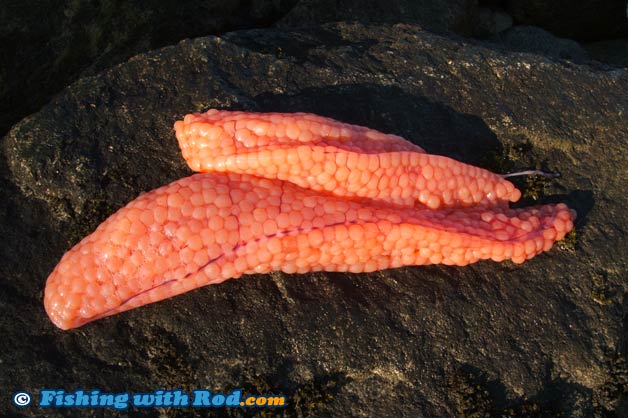Roe
Roe is a cluster of unfertilized eggs in a female spawning salmonid. Two "skeins" or clumps of roe can be found inside a spawning fish. Roe is a traditional and popular bait for salmon, steelhead, trout and white sturgeon in British Columbia.

Before using, fresh roe is often cured first to extend its shelf life. The curing process generally involves soaking it in a salt brine so the eggs can be hardened. Sometimes, the eggs are dyed during curing so they retain a more visible colour. Curing is usually followed by drying until each cluster of eggs has a consistency that matches the angler's preference.
Roe is often cut into small pieces before being tied, looped or threaded onto the hook. Each piece has between 5 and 10 eggs, depending on the size of the eggs and the target fish species.
For salmon and steelhead fishing in rivers, roe from chinook, coho, steelhead and chum salmon are often used. Pink and sockeye salmon roe are often used for sturgeon fishing.
Because roe is such an effective bait, salmonids have a tendency to swallow it, resulting in deep hooking. Deep hooking often increases mortality if the fish is released, therefore bait such as roe has been banned in some catch and release fisheries in British Columbia.
